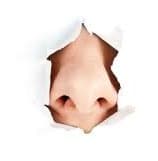No products in the cart.
The History of Scent Marketing

Because scent marketing is a strategy that has long been “under the radar,” many news articles about it hail it as a new phenomenon. Some people in the industry have even claimed to have invented it within the last 17 years. However, scent marketing has been around for decades and has evolved in terms of fragrance quality, technological capabilities of the diffusers and applications.
The Discovery
The idea of strategically scenting building interiors was born in 1976 when Mark Pelitier, a technician for the Air Force, found himself in the Muir Woods. He noticed the fresh aroma of rain drenched redwoods, ferns and other greenery and how it made him feel calm and relaxed. He wondered if there was a way to bring that fresh aroma inside buildings and he started trying to create a device to make that happen. In the late 1970’s, Peltier succeeded in inventing the first commercial scent diffuser, launching his company Aromasys along with the entire scent marketing industry.
The First Customers
The first scent marketing customers were the casinos in Las Vegas. Back in the 1970’s, smoking in public places was common and the casinos had a cigarette smell problem. In order to get rid of the cigarette smoke smell, they installed scent diffusers in the casinos. Because most casinos are attached to hotels, scent marketing gradually began to move into hotel lobbies to create a welcoming atmosphere for guests when they arrive. In the 1980’s, a few stores started to diffuse aromas as well.
Scent Marketing Research
The first scientific studies on the effects of scent marketing were done by Dr. Alan Hirsch, founder of the Smell and Taste Treatment and Research Foundation in Chicago. The organization treated patients with smell disorders and did research on scent and olfaction.
In 1990, Hirsch did the first study of scent marketing in retail. He set up two identical “stores” with displays of Nike shoes. In one room, he piped in purified air and in the other, air with a floral scent. He had participants come into the room to look at the merchandise and then asked them questions. He found that the subjects who went into the scented room were 84% more likely to buy a pair of shoes as those who went into the unscented room. “Shoppers” in the scented room also said that they were willing to pay 10% more than the people in the unscented room. After this research was published, more stores started to add ambient scent.
When casinos started to scent, they did it to make the ambiance more pleasant, but an interesting phenomenon took place. They started to see revenues increase. Intrigued by this, Dr. Hirsch decided to do some research to see if the scent was responsible for the increase in gambling revenues. He focused on the slot machines. He chose three comparable slot machine zone and scented two of them. Then he compared the revenues for those zones before, during and after the scenting. While the unscented zone showed no change, the scented zones had a 45% increase in gambling revenue.
Since then, many respected scientists including Rachel Herz, Maureen Morrin and Eric Spangenberg have done studies that confirmed Hirsch’s results and added new insights. We regularly include insights from new scent marketing research in this blog.
The Technology
Scent marketing diffuser technology has come a long way in the past almost five decades. Early scent diffusers gave uneven results and it was hard to adjust the scent’s intensity. Today’s diffusers, however, diffuse the fragrance oil into a micro mist and can deliver it through the HVAC system. Fragrance droplets are very tiny, from 5 to 20 microns. That is way smaller than the period at the end of this sentence. Because the droplets are so small, they can carry on the air pumped by the HVAC system and evenly disperse throughout a room.
Modern scent diffusers allow clients to finely tune the intensity and include timers so that they cycle off periodically. This allows clients to save money on fragrance oil refills while still having consistent scenting during business hours. Air Esscentials’ AE700 allows clients to program it over bluetooth with an app for ultimate control and flexibility.
Fragrance Oils
In the early days of scent marketing, Eileen Kenney a self-described “former hippie” and aromatherapy enthusiast, mixed the fragrance oils without any formal training.
Today, professional scent marketing companies like Air Esscentials employ top perfumers to create both stocked and custom scents. All of Air Esscentials’ fragrance oils are IFRA compliant, which is the highest international safety standard.
Scent marketing has, indeed, come a long way in its 43 year history. Top scent marketing companies like Air Esscentials are continuing to refine diffuser technology and create new and more intriguing fragrances. More and more industries have discovered the benefits of scent marketing including healthcare, events and professional sports.
Quick Links
More
Sign up for our newsletter!
Contact Information
-
1800 NW 96th Avenue, Doral, FL 33172
-
[email protected]
-
305.446.1670
Office Hours
-
Monday to Thursday: 9 A.M. to 5 P.M. EST
-
Friday: 9 A.M. to 4 P.M. EST
-
Saturday & Sunday: Closed




Copyright © Airesscentials. All rights reserved.
